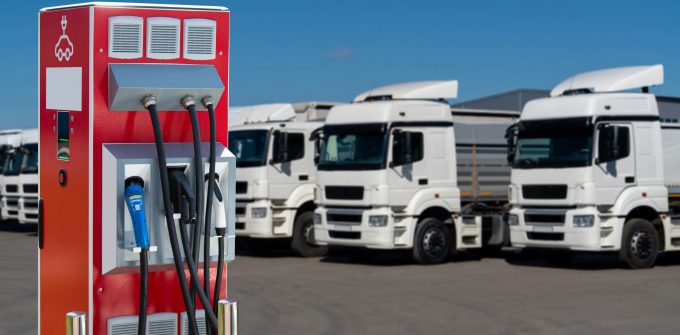Last-mile parcel carriers struggle while global express market is set for growth
The global express parcel market is set to see steady growth over the next four ...
TFII: SOLID AS USUALMAERSK: WEAKENINGF: FALLING OFF A CLIFFAAPL: 'BOTTLENECK IN MAINLAND CHINA'AAPL: CHINA TRENDSDHL: GROWTH CAPEXR: ANOTHER SOLID DELIVERYMFT: HERE COMES THE FALLDSV: LOOK AT SCHENKER PERFORMANCEUPS: A WAVE OF DOWNGRADES DSV: BARGAIN BINKNX: EARNINGS OUTODFL: RISING AND FALLING AND THEN RISING
TFII: SOLID AS USUALMAERSK: WEAKENINGF: FALLING OFF A CLIFFAAPL: 'BOTTLENECK IN MAINLAND CHINA'AAPL: CHINA TRENDSDHL: GROWTH CAPEXR: ANOTHER SOLID DELIVERYMFT: HERE COMES THE FALLDSV: LOOK AT SCHENKER PERFORMANCEUPS: A WAVE OF DOWNGRADES DSV: BARGAIN BINKNX: EARNINGS OUTODFL: RISING AND FALLING AND THEN RISING

Drivers, hauliers and their associations remain unconvinced by electric HGVs as a fossil-fuel free alternative for haulage – even after DPD set a new distance in an electric truck.
DPD’s fully electric HGV travelled around 1,100 km around a test track.
News of the achievement followed DHL’s acquisition of 50 electric vans and Volta’s announcement of a new manufacturing plant in Austria.
However, IRU advocacy director Matthias Maedge told The Loadstar: “We’re sceptical about the economic and operational viability of electric trucks, especially for medium and long distances, due to cost, battery weight and the lack of infrastructure.
“We need progress in all solutions, including electric trucks, but it’s also important to note that they are not always the best option to reduce CO2 emissions – it depends how the electricity is generated.”
One trucker believes electric trucks “simply aren’t viable” outside big cities, adding “which means they’re not viable as HGVs anywhere”.
The owner of a UK-based haulage firm noted: “There’s been no proof of concept, because it is too new a technology, and this means it is not reliable for the HGV sector – we can’t invest in expensive tech, only to have it conk out. Reliability is key for us.”
But he added: “That being said, if we could get a demonstrator to test it over, say, three months, that would be a potential game changer. The trial would need to prove reliability and we would also need the associated infrastructure.
“If reliability was proven and the infrastructure was there, we wouldn’t be opposed to buying them.”
However, the haulier also said the limited market availability of electric trucks made him question their viability.
Currently, major manufacturers like Volta, Arrival, Rivian and Tevva have focused on final-mile delivery and, while the likes of Tesla have engaged in high-profile marketing campaigns, available models are roughly 400% more expensive than diesel trucks.
Another issue for electric uptake is that of range. Wallenborn’s commercial director, Jason Breakwell, told The Loadstar: “Of the few trucks either on the market or those coming soon, they have a range of approximately 150km, whereas our typical trip length is as much as 500km – so they’re only suited for local transport.
“Added to this is very few charging facilities at truck stops and questions over how green it actually is.”
This year, the EC made it known it was prepping plans to impose a deadline for the phasing-out of combustion engines and a carbon pricing for carmakers as part of its efforts to turn the EU-27 ‘green’.
But an absence of green energy generation across the continent means somewhere in excess of 50% of electric energy for vehicles originates from the burning of fossil fuels and Mr Breakwell said this made the switch to electric “somewhat redundant”. And he noted that alternatives to electric vehicles remained very limited, with “commercially viable” green hydrogen “probably 15 years away”.
And he added: “Electrification will require massive government investment, either in overhead catenary or charging points.
“For application to long-distance haulage, a self-charging truck would be an interesting proposition, and some companies are investing in developing swappable batteries, but this will also require immense investment in a pan-European network of swap stations.”
Among sceptics, there appears some agreement that the industry would be best placed to wait for the EC’s white paper on electrification, expected late next year.
“This will provide the framework for policy and stimulus for investment, and should also set out how infrastructure investment might be funded, especially in lieu of taxes and duties today collected from fuel sales,” said Mr Breakwell.
Comment on this article